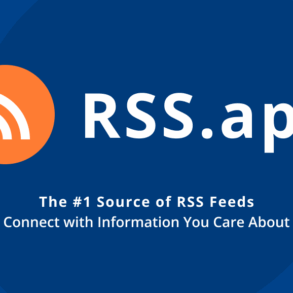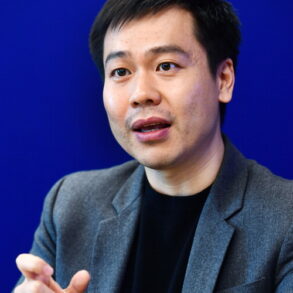
The Sam Altman versus Elon Musk beef is now anything but polite. In February, Musk lobbed a $97.4 billion takeover grenade at OpenAI, to which Altman responded on X with a “no thank you but we will buy twitter for $9.74 billion if you want.”
X wasn’t bought, but Altman is building its competitor.
OpenAI has been sketching its own X-style playground for months — long enough that insiders now talk about the launch of the new social network in terms of when, not if.
In February, after Meta announced plans to build a standalone app for its AI assistant to rival the ChatGPT app, Altman shot back on X: “ok fine maybe we’ll do a social app.”
Word then leaked on April 15 that an internal OpenAI prototype pairing a social feed with ChatGPT’s image-generation capabilities was under review. More sources went so far as to confirm that, beyond this prototype, OpenAI was now “considering” a full-blown rival to X.
This social network push lands at a pivotal moment when AI models are becoming commoditized, Meta’s social media monopoly is showing signs of vulnerability, and hardware integration is emerging as a key differentiator.
By combining three elements — a social platform built natively for AI, world-class tech designer Jony Ive, and purpose-built companion devices — OpenAI is positioning itself at the intersection of all three powerful trends.
If the company accomplishes this social media play successfully, it’s going to catch other tech giants flat-footed, so much so that I am convinced we’re witnessing the first salvos of a full-blown social media revolution.
AI-first social media
Rather than simply connecting users to share content, OpenAI’s social network prototype appears designed to leverage AI to enhance the content creation process itself. Instead of “share and then scroll,” AI jumps in at minute one to help make the post.
This is similar to X’s integration of Grok — if you’ve used it, you will quickly notice that people love to get the AI to say something stupid so that they can share the output and see their post go viral.
The equivalent here for OpenAI is to leverage its fan-favorite image generation capabilities in a social setting. In just the first week of the tool’s availability, more than 130 million ChatGPT users created more than 700 million images. This massive adoption indicates significant user interest in sharing AI-generated visual content, the same way people are already sharing AI-generated written content on X.
Far from being another X clone, though, OpenAI’s social network is shaping up to be something entirely new. Here’s what I’ve pieced together so far:
- AI-assisted content creation centered around ChatGPT’s image-generation capabilities
- A social feed for sharing and interacting with AI-generated content
- Integration with OpenAI’s existing AI capabilities and potentially its user base
- Safety guardrails similar to those used in ChatGPT’s image generation
There’s also likely a hardware component to the network.
On May 21, OpenAI announced its acquisition of io, a hardware company founded by former Apple design chief Jony Ive. The deal, valued at nearly $6.5 billion in an all-stock transaction, brings approximately 55 hardware engineers, software developers, and manufacturing experts into OpenAI’s fold.
The first devices following the acquisition are set to launch in 2026, but they won’t be smartphone replacements. Some details about the tech — including that it will be pocket-sized, contextually aware, screen-free, and not a pair of smart glasses — were mentioned in an internal OpenAI call.
The connection between this hardware initiative and OpenAI’s social network ambitions is strategically significant. I am convinced that by developing both a social platform and companion devices, OpenAI is positioning itself to create a fully integrated ecosystem where AI-powered social experiences are optimized for purpose-built hardware.
It’s the classic Apple playbook, only this time the organizing principle is pure AI.
Additionally, while Ive won’t be joining OpenAI directly — his design firm, LoveFrom, will continue to be independent — the partnership will see LoveFrom “take over design for all of OpenAI, including its software.” The aesthetic and user experience of OpenAI’s social network will undoubtedly benefit from Ive’s renowned design sensibility.
“AI is an incredible technology, but great tools require work at the intersection of technology, design, and understanding people and the world,” Altman said in a statement announcing the io acquisition.
Google’s io countermove
Google is undoubtedly one of OpenAI’s biggest competitors in the AI space, and at I/O 2025 (coincidentally held the same day that OpenAI announced the acquisition of io), the search giant unveiled significant and impressive AI updates.
Two big ones were the integration of Gemini into Chrome for desktop users and the announcement of “Agent Mode,” an experimental feature where users can simply describe their end goal and Gemini can work autonomously to accomplish it. This capability mirrors the kind of AI-assisted experience that sources say OpenAI is building into its social network.
According to Google’s official I/O 2025 blog post, Gemini 2.5 Pro is now the world-leading model across the WebDev Arena and LMArena leaderboards, and based on my personal experience using Google’s models with performance benchmarks specifically in mind, they are leading in many respects. The post also notes that the Gemini app now has over 400 million monthly active users — a user base massive enough to put it in direct competition with ChatGPT.
However, while these advances position Google as a threat to OpenAI’s growing AI ecosystem, they also suggest the company’s strategy is to continue enhancing its existing products with AI rather than trying to compete directly in the social networking space.
A weakening empire
As for the king of that space — Meta — it is plowing ahead with efforts to defend its territory against OpenAI’s advances.
During a Q1 2025 earnings call on April 30, CEO Mark Zuckerberg outlined a comprehensive AI strategy. “We’re making good progress on AI glasses and Meta AI, which now has almost 1 billion monthly actives,” Zuck told investors, according to the call’s transcript. This milestone puts Meta’s AI assistant on par with Google’s Gemini in terms of user adoption — and potentially ahead of ChatGPT.
Meta’s Llama 4 family of models has seen remarkable adoption, with Meta saying in March 2025 that Llama had reached 1 billion downloads. The day before the earnings call, the company launched a dedicated Meta AI app built with Llama 4, calling it “a first step toward building a more personal AI.” This standalone app represents a direct challenge to ChatGPT and, by extension, OpenAI’s social network plans.
OpenAI can position itself as a fresh, AI-native alternative to Meta’s existing social experiences.
While still dominant in the social networking space, Meta is showing signs of vulnerability, though.
The company appears steadfast in its belief that social experiences will ultimately span both AI assistants and immersive virtual worlds, as evidenced by its continued investment in Horizon Worlds. This vision of social VR may soon compete directly with OpenAI’s social network and hardware initiatives, but the investment has yet to yield significant returns: In Q1 2025, Meta’s VR Labs division reported another $4.2 billion loss.
Meta’s pivot to AI also suggests a defensive posture against emerging threats, such as OpenAI and Anthropic. This creates a strategic opening for OpenAI’s new social network — it can position itself as a fresh, AI-native alternative to Meta’s legacy platforms and existing social experiences, which are being retrofitted with AI capabilities.
Anthropic as the challenger
Speaking of Anthropic, the day after Altman’s Ive splash, the AI landscape grew even more competitive with the startup’s unveiling of Claude 4 and introduction of two new models: Claude Opus 4 and Claude Sonnet 4.
“Claude Opus 4 is the world’s best coding model, with sustained performance on complex, long-running tasks and agent workflows,” Anthropic shared in its launch announcement. The company backed this claim with impressive benchmarks: 72.5% accuracy on Software Engineering Benchmark and 43.2% on Terminal-Bench. I’ve reviewed the benchmarks and already used Claude 4 in my IDE for complex coding tasks and am convinced we’re at an inflection point for AI coding models.
What makes Claude 4 particularly relevant to OpenAI’s social network ambitions is its enhanced ability to work continuously for several hours — a capability that could enable more sophisticated AI agents within social platforms. According to Anthropic, Claude Opus 4 can maintain focus on tasks requiring “thousands of steps,” dramatically outperforming previous models.
This Claude 4 launch underscores a critical strategic reality for OpenAI: AI models themselves are rapidly becoming commoditized.
With multiple companies now offering powerful, state-of-the-art AI capabilities, the underlying technology alone is no longer a sufficient differentiator. This commoditization makes OpenAI’s social network play increasingly important as a way to create a unique, defensible market position. By controlling both the AI models and the social platform where users interact with them, OpenAI can create value that goes beyond what’s possible with the models alone.
The societal stakes
And then there’s the data. Always the data.
Real-time user interactions are invaluable for training future AI models — they’re like digital gold in a world now overrun with AI slop. A social network provides its owner with a steady supply of this data, which will only become more valuable as base model capabilities converge across competitors.
X and Meta are already getting this unique, real-time training data from their networks. OpenAI needs it, and the acquisition of Ive’s io could add world-class design and dedicated hardware to its social media offerings, helping draw users in.
As the major AI players — OpenAI, Google, Meta, and Anthropic — continue to evolve their strategies and capabilities, the lines between AI assistants, social networks, and hardware devices are increasingly blurring. I believe we are witnessing not just incremental improvements in AI tech, but the emergence of an entirely new category of products and experiences that could fundamentally reshape how we interact with social media.
Like it or not, AI eyes are now on our feeds.
We’d love to hear from you! If you have a comment about this article or if you have a tip for a future Freethink story, please email us at [email protected].
This post was originally published on this site be sure to check out more of their content








